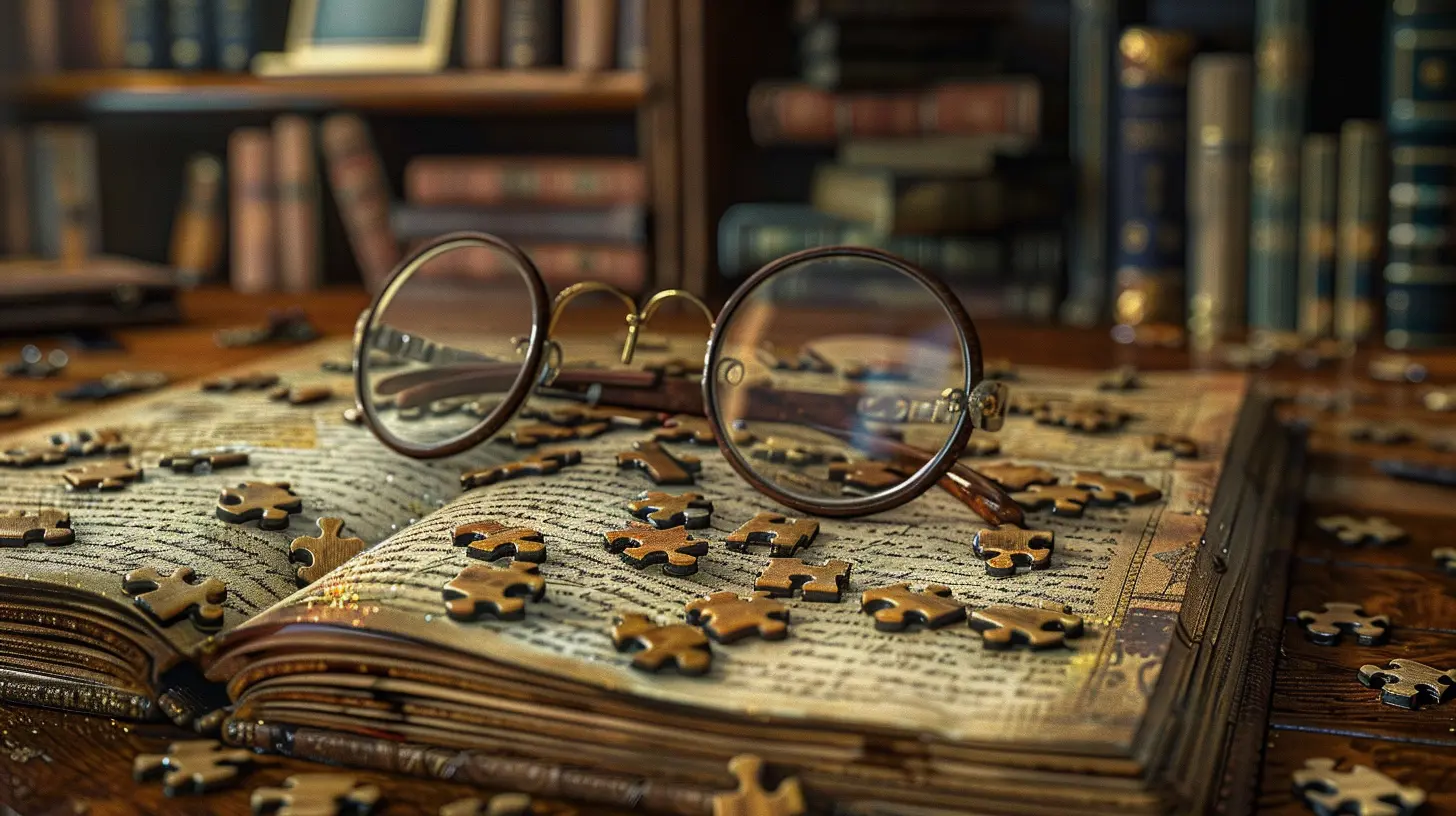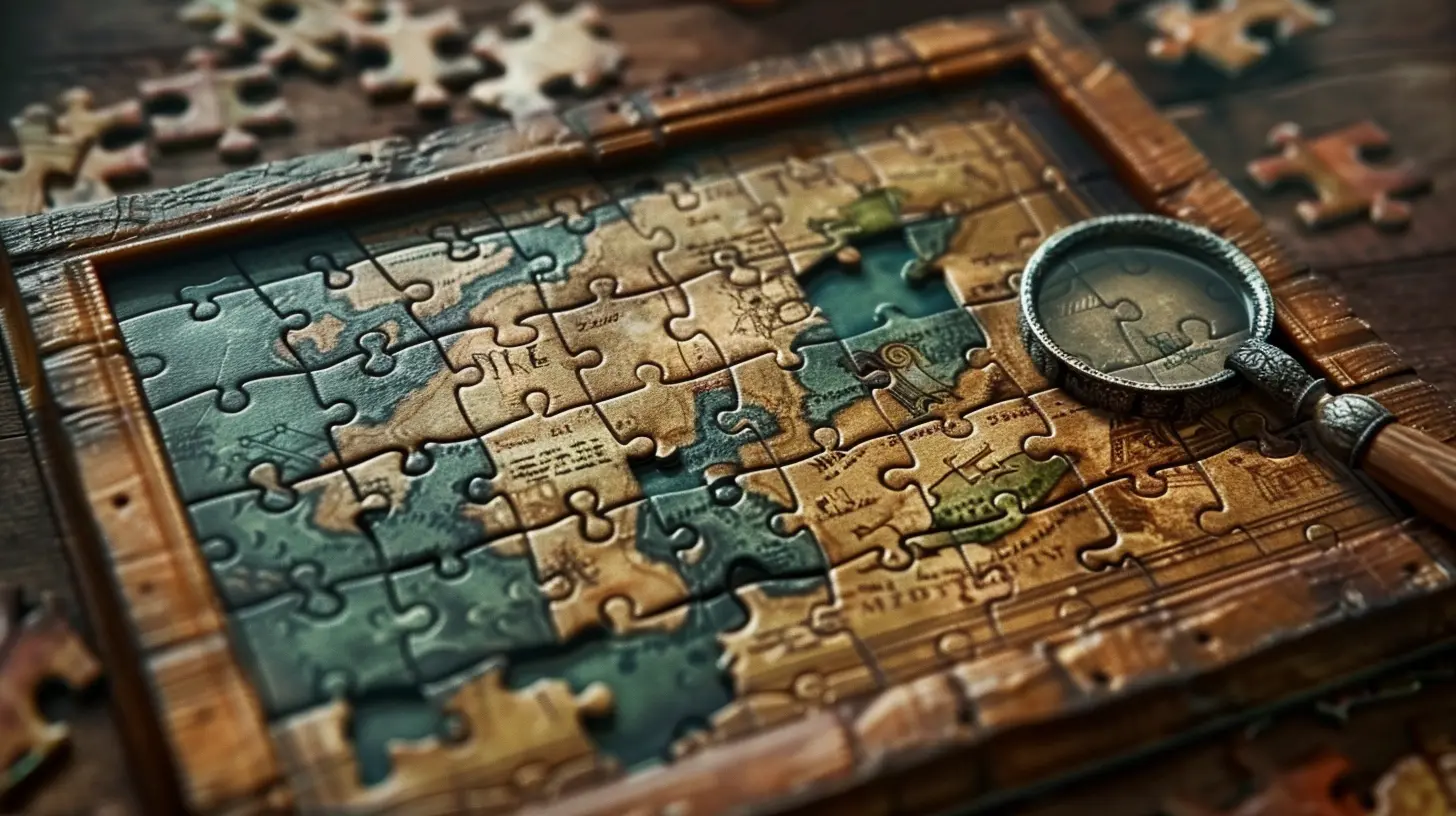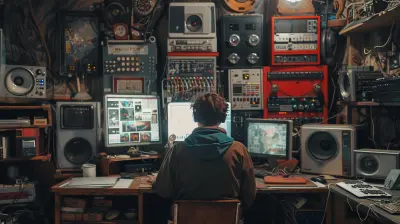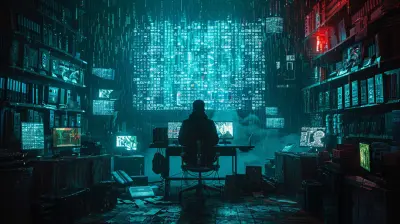The Magic Behind a Perfect Casual Puzzle Game
3 November 2025
Ever been stuck on a level for hours, yet still couldn’t stop playing? Or maybe you’ve opened up a game “just for five minutes,” and suddenly, it’s an hour later. That, my friend, is the magic of a perfect casual puzzle game.
But what exactly makes a puzzle game so damn addictive—yet soothing? Let’s dig deep into what’s happening behind the scenes, from clever design choices to brain-tickling mechanics. Whether you’re a casual gamer or a developer wondering how to make the next big hit, this is the ride you didn’t know you needed.
What Exactly Is a Casual Puzzle Game?
Before we get too far ahead of ourselves, let’s clear one thing up: what do we mean by a “casual puzzle game”?It’s simple. These are games you can pick up and play without needing hours of commitment. They don’t demand lightning-fast reflexes, and they don’t come with a steep learning curve. Think of titles like Candy Crush, Monument Valley, or 2048. They’re easy to start, hard to master, and strangely hard to put down.
Puzzles, in this context, aren’t just crosswords or Sudoku. They’re any gameplay mechanic that challenges your mind in small, satisfying snippets.
The Secret Sauce: Simplicity Meets Strategy
Let’s face it—nobody loves a game that makes them feel dumb. That’s why the genius behind a casual puzzle game isn’t about making things harder. It’s about striking a perfect balance between ease and challenge.🧠 Simple Mechanics, Deep Gameplay
At first glance, a good puzzle game seems childishly simple. Swapping gems? Moving tiles? Connecting dots?But then it slowly reveals its layers. That’s where the magic begins. Every move matters. It’s like chess disguised as tic-tac-toe.
The goal isn't to overwhelm, it's to encourage you to think a little deeper—without you even realizing it.
🕹️ Tap, Slide, Flip – Easy Controls
Ever notice how most successful puzzle games can be played with just one finger?Accessibility is key here. Controls are intuitive, fluid, and require zero mental load. You could be half-sleeping on your couch, and still match three colors or find hidden paths. That’s not laziness. That’s elegant design.
The Psychological Hooks: Why We Keep Playing
So, what keeps us glued? Spoiler alert: game designers are excellent psychologists.✅ Instant Gratification
Ding! You just cleared a level. Bright lights flash. Coins pop out. That glorious “You Win!” screen makes us feel like geniuses. It’s not just fun—it’s a reward loop.Each solved puzzle is a dopamine hit. It’s like giving your brain a mini high-five. Who doesn’t want more of that?
🔄 The “Just One More Try” Effect
That one level you almost beat? Soooo close? That’s not an accident. It's what game designers call a near miss. It’s frustrating just enough to keep you going, but not so hard that you rage-quit.You’re constantly teetering on the edge of success. That little nudge keeps you in the loop, hitting “Retry” like your life depends on it.
🧩 Progression Without Pressure
Here’s the beauty of casual puzzle games—they let you progress at your own pace. There’s no “game over” screen haunting you. You try, you fail, you try again. And somewhere in between, you relax.It’s like doing yoga for your brain, but with adorable sound effects.
The Aesthetic Alchemy: Looks Do Matter
Let’s not lie—part of the reason we fall in love with these games? They’re pretty. And we mean, Pinterest-worthy pretty.🎨 Visual Clarity Is Everything
The best puzzle games don’t clutter the screen. Each piece, gem, tile, or icon is distinct and polished. The colors are chosen deliberately—soothing pastels or bold brights depending on the game’s vibe.This isn’t just eye-candy. Your brain processes clean visuals faster. The quicker you understand what's happening, the more satisfying every move feels.
🎵 Sound That Soothes (or Hypnotizes)
Ever left the volume on by accident and realized the music is actually soothing? Yeah, that’s on purpose.From soft piano keys to satisfying clicks and whooshes, sound design in puzzle games is crafted to enhance focus and reward. Think of it like background music in a coffee shop—it’s subtle, comforting, and helps you get in the zone.
Level Design: The Unsung Hero
If art and sound draw you in, level design keeps you there. This is where the real wizardry happens.🧱 Difficulty Curves That Make Sense
Good puzzle games teach you as you play. The first levels are usually a cakewalk—but each new level adds a tiny twist. No hand-holding, no boring tutorials. You learn by doing.It’s like being guided along a mountain trail. The path gets steeper, but your legs get stronger each step of the way.
🔄 Variety Keeps It Fresh
Nobody wants to do the same thing over and over. Designers throw in new mechanics, different objectives, or even time-based challenges to spice things up.One level you’re clearing blocks, the next you’re avoiding traps. It keeps your brain guessing—and that’s exactly the point.
💡 A-ha Moments
The most satisfying part of any puzzle game? That glorious “A-ha!” moment.When a solution suddenly clicks, it’s like unlocking a door in your brain you didn’t know existed. It’s these tiny victories that build long-term love for a game.
Monetization Without Disruption
Let’s talk money—but keep it classy.🤑 Ads That Don’t Kill the Flow
We’ve all rage-uninstalled a game because of obtrusive ads. The best puzzle games know how to include ads or purchases without destroying the experience.Whether it’s optional rewarded videos or tasteful prompts to buy boosts, balance is key here. It’s about offering value, not forcing your hand.
💎 In-App Purchases That Feel Optional
Casual players need to feel like they’re not being punished for playing free. Power-ups and extra lives should enhance, not gatekeep.Players should think, “I WANT to support this game,” not “I HAVE to pay to keep playing.”
Social Features: Competition Meets Community
Even if you’re playing solo, you’re not really alone.🪙 Leaderboards and Daily Challenges
Competing with friends or the wider community adds that little spice of motivation. Whether you're chasing a high score or completing daily tasks, it's all about feeling part of something bigger.🫂 Low-Stakes, High-Reward Social Sharing
Perfect casual puzzle games let you share wins, high scores, or even cool level designs without spamming your feed. It’s subtle bragging—without annoying the people who follow you.The Little Things That Make a Big Difference
Ever noticed how your favorite puzzle game seems to “just feel right”? It’s not magic—it’s attention to detail.⏳ No Loading Lag
Quick launch times and smooth transitions keep you immersed. Nobody wants to stare at a spinning circle for 30 seconds on a coffee break.🤖 Smart Hints System
A well-designed hint system is like a helpful friend. It nudges you in the right direction without giving away the whole answer. Pride intact, frustration gone.🔁 Offline Mode
Internet down? No problem. Offline access ensures that your game goes where you go—commute, vacation, or even airplane mode zen moments.Case Studies: Puzzle Games That Nailed It
Let’s quickly look at a few examples of puzzle games that hit all the right notes.1. Candy Crush Saga – The OG dopamine machine. Easy to learn, impossible to quit.
2. Monument Valley – A surreal, artistic journey with mind-bending puzzles.
3. Threes! – Minimalist, elegant, and endlessly replayable.
4. Cut the Rope – Physics-based fun with adorable mascots.
5. Brain Out – Unpredictable, bizarre, and completely addictive.
Each of these titles nailed simplicity, clever design, soothing aesthetics, and that magical flow state that keeps players hooked.
Why the World Needs More Casual Puzzle Games
In a world buzzing with notifications and stress, casual puzzle games are like a warm cup of tea for your brain.They’re short escapes—mental massages—built around joy, challenge, and relaxation. Whether you’re killing time or sharpening your mind, they offer an experience that’s both casual and meaningful.
And let’s be honest—who doesn’t love a good brain teaser that makes them feel super smart?
Final Thoughts
Creating the perfect casual puzzle game isn’t just about flashy visuals or clever mechanics. It’s a symphony of design, psychology, and user experience.It’s about getting that sigh of satisfaction after solving a level. That itch to try just one more round. That gentle sense of progress, free from pressure.
So next time you open up your favorite puzzle game, remember—there’s a whole lot of magic packed into those simple swipes and taps.
Now go ahead. Solve something.
all images in this post were generated using AI tools
Category:
Casual GamesAuthor:

Stephanie Abbott
Discussion
rate this article
1 comments
Skylar McLaughlin
Puzzle games are like chocolate for the brain! 🍫 Whether it's match-3 or wordplay, they magically turn our downtime into a delightful adventure. Game on!
November 7, 2025 at 5:37 PM

Stephanie Abbott
Absolutely! Puzzle games truly engage the mind and make relaxation feel rewarding—just like enjoying a sweet treat! 🍫


